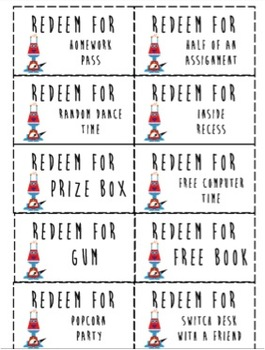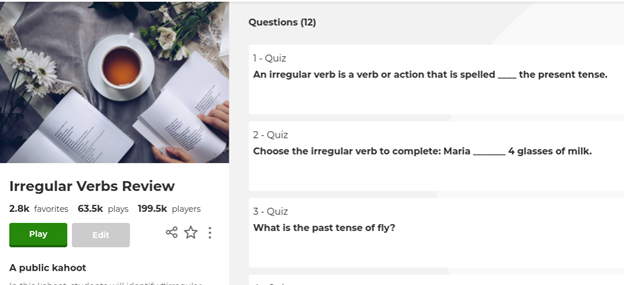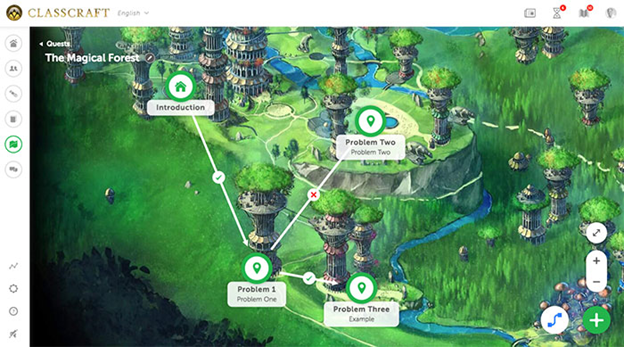How to use the psychology of video games to supercharge your classroom
Who doesn’t love a little friendly competition? I know my high schoolers do. Before we dive into the world of gamification, we need to know the difference between gamifying and game-based learning. According to Chris Aviles in “How To Integrate And Manage Video Games In Your Classroom”, “gamification is when you use video game mechanics to motivate, engage, and empower students. If you are gamifying, you are not using games in the classroom, but are using game mechanics like xp grading, leaderboards, item shops, narratives, and other game mechanics to hook kids.”
Dr. Sandra Hemphill states in the webinar “Hi-Lo Books Webinar: Gamification in the Classroom for English Language Learners” that gamification is great for student engagement, community building, and reinforcement of learning. It also has an effect on teacher enthusiasm and engagement, which is an added bonus! In addition, in “Four Ways to Teach with Video Games”, author Max Lieberman says “game elements that motivate players and mirror good teaching techniques include setting clear goals, forming healthy competition and providing immediate feedback (Malone 163-166).
It seems like there’s nothing but positives to come from gamification, but what can it look like in the ELA classroom?
Creating Community

Creating a sense of community may be more important now than ever as we are separated in our homes during the pandemic. Using elements of gaming can help bring students together virtually by using teams and focusing on the positive.
Utilizing a common goal with students builds a sense of togetherness. Phi Delta Kappan: the professional journal for educators states that “when implemented well, goal-setting practices have a significant positive influence on student outcomes and school cultures” (Leithwood & Sun, 2018; Moeller, Theiler, & Wu, 2012). More specifically, “The Importance of a Positive Classroom” says that students learn better when they view the learning environment as positive and supportive (Dorman, Aldridge, & Fraser, 2006).
Ways to create community by gamifying might include having students play in teams to earn points, therefore enabling them to unlock real-life powers for their common goals. In Classcraft, students play in teams and earn points for positive behaviors, getting a question right, and helping others. In ReadTheory, many teachers use knowledge points to create competitions within their classes or as a class to achieve a common goal. For example, students may work towards earning 5,000 points by the end of the month.
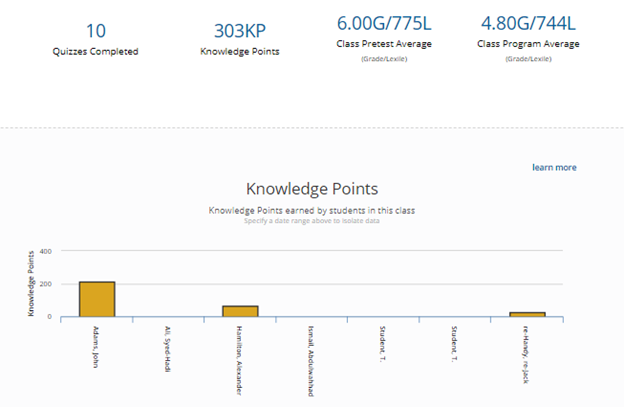
Finding the reward that students want to work for may be the tricky part. You really have to know your students in order to understand what motivates them. And a lot of times, teachers overdo this. Students don’t need full candy bars or Takis to be motivated (which I may or may not have done in my first year teaching). Here are some ideas from “Why is it important to have a classroom reward system?”:
Use class bucks or reward cards to achieve:
- Hall passes
- Trips to the treasure box
- Swapping seats with a friend
- Helping a teacher
- No homework pass
- Sit at the teacher’s desk
- Computer time (for high school, swap out phone or music time!)
Engagement and Progress Monitoring
I think it’s safe to say that I’m not the only one who watches the progress bar when taking an online quiz; it gives me special satisfaction to see how close I’m getting to the end. In “The Power of the Progress Bar”, Neil Patel explains this as us trying “to mentally fill in the gaps under Gestalt psychology’s Law of Closure. Our attention is held there as we envision completeness.”
Just like adults, making student’s progress visual keeps them engaged. Progress bars or badges give students motivation to continue. In class, teachers can show anchor charts or class graphs to make goals visible. For individual students, teachers may include goal-setting sheets or notebooks.
In my ESL class, I like to show student’s WIDA data at the beginning of the year, and I frequently return back to their scores to have them evaluate how they are doing. It’s made visual by posting a copy of WIDA’s Can-Do chart and entering students anonymously by assigning each of them a color. Students know their color, but not their classmates.
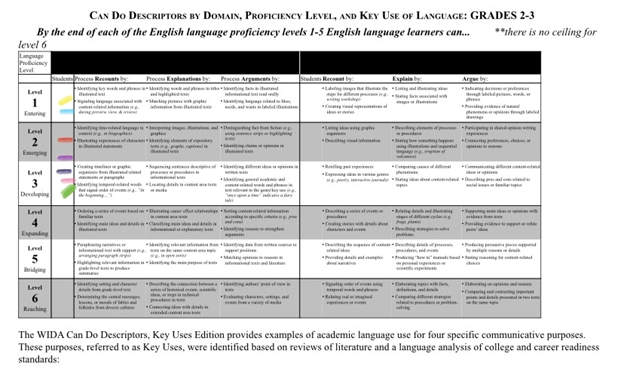
Online, Kahoot and ReadTheory are great examples of using knowledge points and showing progress to make it visual and keep students engaged. Kahoot shows students who are in first, second, and third places after each question. Students can also see the points they earned and how far behind or ahead they might be from others.
Kahoot is one of my favorite ways to review content, grammar and vocabulary. This year in my classroom, we’ve played Kahoots with my English Learners as review for independent and dependent clauses, forms of be, and vocabulary for the Immigrant Contribution by John F. Kennedy to name a few.
ELA by Kahoot has tons of Kahoots focused on ELA topics such as British LIterature, capitalization, point of view, parts of speech, and irregular verbs. And by tons, I mean 178 to be exact at the time of this publication.
Learning the Content with a Growth Mindset
We know as teachers that we sometimes need to reteach concepts. “10 Specific Ideas to Gamify Your Classroom” says that when a challenge is failed in a video game, users are able to learn from their mistakes, try again, and succeed. Giving students the ability to try again ensures more chances of mastery and gives them confidence when they start grasping the standards, therefore instilling a growth mindset. A growth mindset is “about taking feedback, learning from experience, and coming up with strategies for improving. It’s believing that even if you fail at something, you can still succeed.”
Classcraft explains that in their Quests, “each point on the map consists of a learning activity created by the teacher, which could be a worksheet, video, quiz, or other material, alongside an optional narrative element. As students complete activities, the adventure unfolds, getting them excited to progress and find out what happens next.” Using Romeo and Juliet, a teacher could make each point on the map related to a scene, getting them excited about how the story unfolds as they go and giving them the ability to go back and re-learn material if needed.
Another great online tool for learning and mastering content is Nearpod’s Time to Climb. In Time to Climb, students have to answer questions correctly in order to move to the top of the mountain. This is a quick and easy way to gamify bell work/do-nows or exit tickets, or as a quick check for understanding.
Just recently while reading “I Have a Dream” by Martin Luther King, Jr., I had my students practice with targeted vocabulary from the text such as segregation, discrimination, and poverty. We did this everyday this week as bell work and they have begged to do it everyday since!
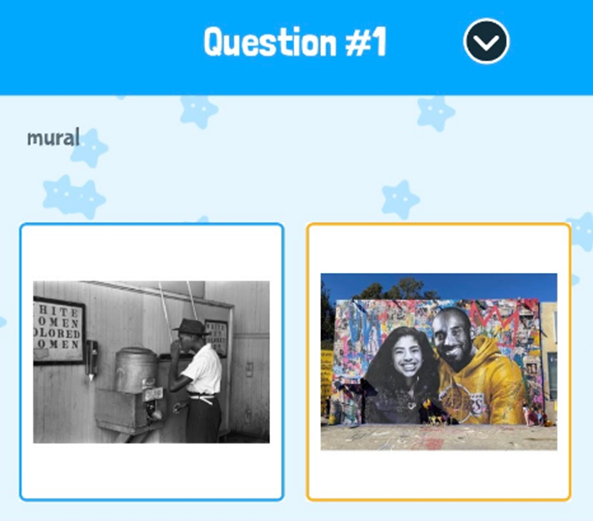
If you’re wondering how to apply some of these strategies to a remote learning environment, be sure to check out Dean’s article on assessing students during remote learning. David also wrote a great article on what we’ve learned about keeping students motivated during online learning.
Gamifying YOUR lessons
Gamifying your ELA class may seem daunting if you haven’t tried it before, but there are simple things you can do to get started:
- Introduce the idea to students
- Run a poll to get ideas on what motivates them for a reward system
- Test the waters with a Kahoot as a review (it’s easy to use!)
- Review your test data and brainstorm ways to present it in your classroom
And if you’re feeling more confident with your gamifying abilities, go ahead and set up your ClassCraft account to get those kiddos reading Beowulf like they mean it! Happy gamifying!
Hero Image Credit: indivisiblegame.com



